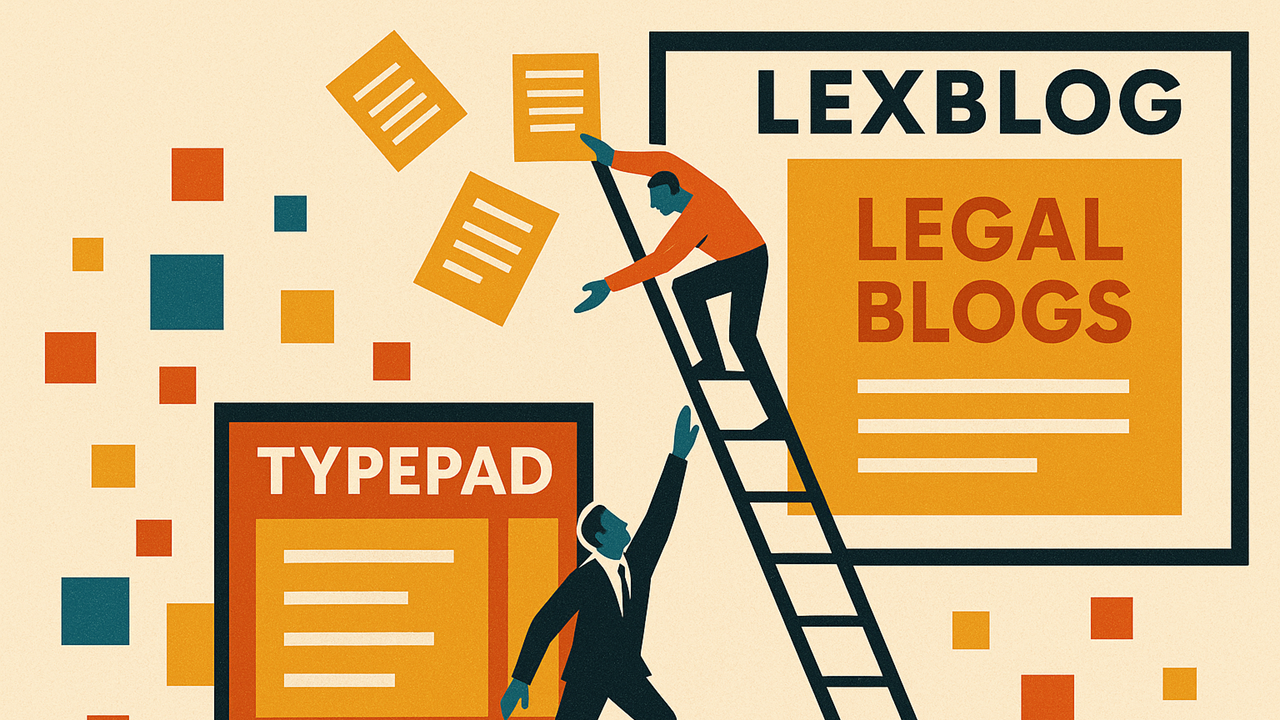When blogging platform Typepad announced in August that it would shut down on Sept. 30, 2025, it threatened to erase decades of legal blog posts that formed a body of scholarship and commentary. In response, legal blogging platform LexBlog mounted an emergency rescue operation that has preserved 579,162 legal blog posts and migrated more than 150 Typepad-hosted sites, pushing the LexBlog’s library past one million preserved posts.
The effort has saved not just the content itself, but an important piece of the legal profession’s intellectual history, the company says, insofar as blog posts serve as secondary legal sources, capturing practitioner insights, academic analysis, and professional commentary that lawyers and researchers continue to rely on.
For example, the effort saved some 224,000 posts from 51 blogs that were part of the Law Professor Blog Network (LPBN), and gave 16 of those blogs a new home on the LexBlog platform.
As LexBlog CEO Kevin O’Keefe put it, the rescue effort was about preserving an essential part of the legal record.
“Law blogs represent an essential part of secondary law, capturing commentary and analysis that lawyers, academics and the public rely upon,” O’Keefe said. “When Typepad announced its shutdown, we knew the risk of losing decades of this legal insight and commentary from practitioners, academics and other legal professionals was real — and unacceptable. Preserving it wasn’t just a service to authors, it was a service to the law itself.”
O’Keefe credited his team and technology platform for making the ambitious project possible. “This rescue effort reflects the dedication and talent of my teammates backed by the strength of our technology platform. In this project alone we preserved roughly 300,000 posts — pushing the LexBlog network past one million preserved legal blog posts and articles in total — and gave new homes to leading voices in the profession.”
The Numbers
LexBlog’s preservation work encompassed three main areas:
Law Professor Blog Network (LPBN): The company secured exports for 51 blogs from the LPBN, representing more than 224,000 posts. Of these, 16 professors have already transitioned to LexBlog’s Stoddard platform, with approximately 154,000 posts now live. The group includes faculty from major universities including Pepperdine, Texas Tech, Notre Dame, Yale and the University of South Carolina.
Attorney blogs: LexBlog migrated 11 law blogs from practicing attorneys and law firms, totaling 35,162 posts. These include blogs from firms such as Sills Cummis & Gross, Dinsmore & Shohl LLP, and Damon Key Leong Kupchak Hastert, as well as individual practitioners.
Rescue crawl: For more than 100 non-LPBN blogs where LexBlog could not obtain direct login access, the company preserved more than 320,000 posts via targeted web scraping, then backfilled images and PDFs for high-value titles.
The dual-track approach of direct exports plus rescue crawling resulted in minimal expected content loss.
How the Rescue Was Done
According to LexBlog, the company mobilized a three-phase plan of discovery, outreach and migration, prioritizing LPBN sites alongside individual legal publishers. Where exports were available, LexBlog imported the archives; when they were not, its engineers ran a rescue crawl to capture posts, then backfilled images and PDFs for high-value titles.
The content it was able to preserve then landed on either new LexBlog sites or on the company’s Open Legal Blog Archive to maintain public access
To minimize downtime, LexBlog stood up pre-live sites on its WordPress-based platform so authors could keep publishing while their archives were being imported. LPBN blogs received standardized branding and a domain pattern that enables custom domains post-launch.
The response from the legal community reflected the stakes involved. According to Brian Biddle, LexBlog’s head of design and product, one professor wrote, “Thank you for taking refugees!” Another said they would be moving their blog “in sackcloth and ashes before the passing of the LPBN.”
“The response from the legal community has been encouraging — editors are grateful, and leaders across the profession recognize the importance of safeguarding these voices,” Biddle said. “Together we’re ensuring that legal commentary which might otherwise disappear remains accessible for generations to come.”
Not Everyone Moved
Paul L. Caron, dean of Pepperdine University’s Caruso School of Law, and the founder and owner of the LPBN, told me that his popular TaxProf Blog is not among those that will move to LexBlog’s publishing platform.
He told me that he will have further news about the future of his blog sometime soon.
What’s Next
As noted, a number of former Typepad blogs are now live and publishing on LexBlog, with additional sites rolling out. Post-launch work includes quality assurance to normalize formatting, targeted media backfill, and SEO setup with sitemaps and search console registration.
LexBlog also presented a WordPress training session for LPBN editors and authors, which was recorded for reuse, and plans to present additional training sessions. The company envisions establishing a dedicated LPBN Publishing Network, potentially integrated with a Law School Blog Network currently under discussion, transforming the rescue effort into a living community of law professors and scholars publishing together.
In a LinkedIn post last month, O’Keefe noted that the community response to Typepad’s shutdown stood in contrast to much of today’s legal content creation. “It’s refreshing, in a time when so much online publishing by lawyers and law firms is reduced to ‘content marketing’ for search performance and analytics, to see legal professionals circle the wagons around publishing for its real value, the law itself,” he said.
 Robert Ambrogi Blog
Robert Ambrogi Blog